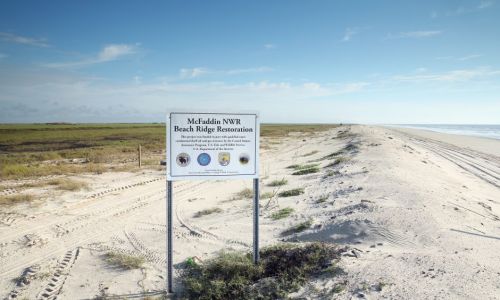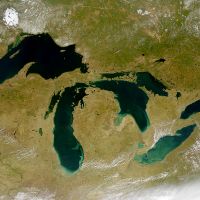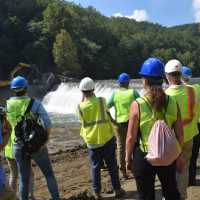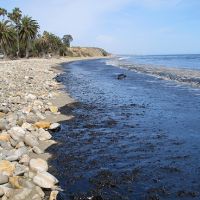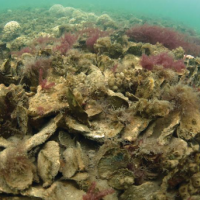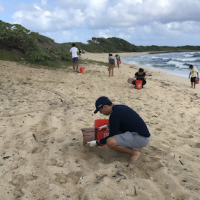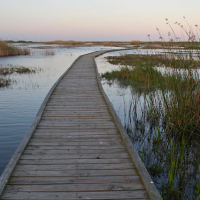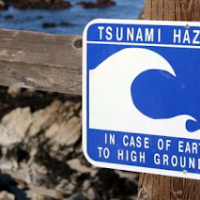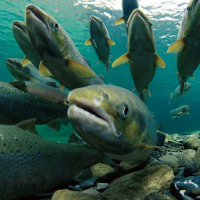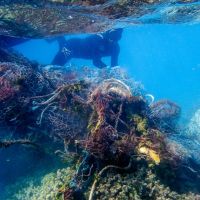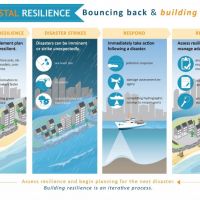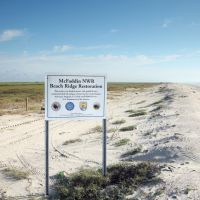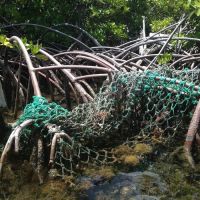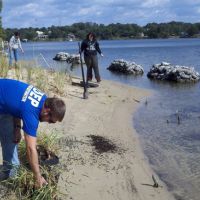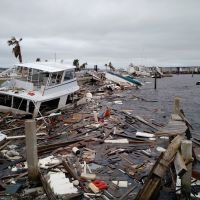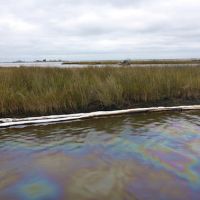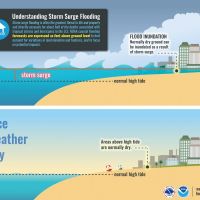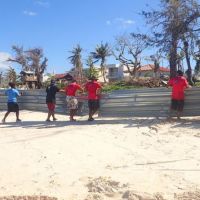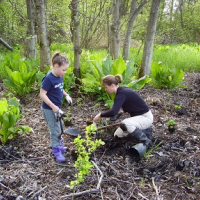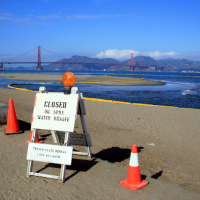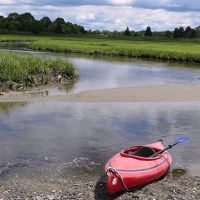The Great Lakes region stands as a crucial ecosystem, supporting diverse species, habitats, and communities integral to both environmental health and human livelihoods.
Coastal Resilience
Resilience is the ability to adapt to changing conditions and withstand—and rapidly recover from—disruption due to emergencies. In other words, it means bouncing back after something bad happens. This ability to overcome, or bounce back, is a concept that applies to individuals, to communities large and small, to our infrastructure, and to the environment.
From coastal storms such as hurricane, to pollution threats such as oil spills and marine pollution, coastal communities are becoming increasingly vulnerable to these threats due to rising sea levels. NOAA's Office of Response and Restoration works to bolster the resilience of our nation's coasts before, during, and after a disaster.
At every stage of a disaster is an opportunity for improving our nation's coastal resilience. Resilience starts with preparedness, and one of the best forms of preparedness is to evaluate the existing resilience of a coastline and invest in living shorelines—nature's defense against disasters—and other proactive measures. During a disaster, OR&R provides scientific expertise to help minimize the impacts to both people, wildlife, and the environment. In the aftermath of a disaster is also an important opportunity to both learn and recover from in a way that better prepares the coast for future disasters.
To learn more about how OR&R supports coastal resilience, visit the resources below.
Learn more about Coastal Resilience
Reconnecting rivers by removing barriers like dams helps foster safe and resilient waterways. In 2018 NOAA and our partners removed the Bloede Dam on Maryland’s Patapsco River, which had blocked fish passage and been a public hazard for 112 years. As the river finds its natural course it will open up more than 65 miles of habitat for fish species, benefiting the businesses and communities around it. Learn more about this project on our blog.
When communities are prepared for an oil spill or other environmental disaster, they are better able to manage a response and more easily restore the impacted environment. As part of our work, we develop tools for planning/responding to spill incidents or disasters. Can they help your community be more resilient?
Did you know one adult oyster can filter 50 gallons of water every day? Unfortunately, due to overfishing and pollution only about 1-2% of the Chesapeake Bay’s historic oyster population remains today. To bolster resilience, NOAA and our co-trustees are working with the Elizabeth River Project to restore over 20 acres of oyster reefs in Virginia.
Community involvement is a powerful tool for coastal resilience. Each year, communities hold coastal cleanups where citizens can get outdoors and collect items littering our coasts. Not only does this help to reduce waste that is currently on the shore, but it also helps to reduce the amount of debris that can become dangerous objects in a storm or get transported elsewhere by strong winds and flooding.
The Deepwater Horizon oil spill disaster in the Gulf of Mexico was the largest marine oil spill in American history. After the spill people stayed home instead of enjoying outdoor recreation. Now, $420 million is funding projects like boat ramps, parks, fishing piers, and outdoor education to restore outdoor recreation opportunities. Learn about eight of these project across the Gulf region in our blog!
Imagine you are sitting on a beautiful beach, when out of the blue an alarm blasts from your phone and reads “Tsunami warning.” Do you know where you would go and what to do? Learn more about the risk of a tsunami where you are and you can be prepared.
Human obstructions like dams and culverts stop migratory fish like salmon in their tracks, putting populations at risk. NOAA-led restoration at the Snohomish Estuary in Washington is helping to restore more than 1,300 acres of previously blocked waterways so fish can pass through.
When oil or other hazardous material spills into coastal waters, immediate response and deployment of resources helps communities recover more easily, building their resilience. OR&R’s multidisciplinary scientists, located around the country, are available to help around the clock.
Healthy habitats are vital for protecting resilient coastal communities, and marine debris can be a big problem for marshes, mangroves, and coral reefs. Removing lost fishing gear, abandoned boats, and other debris is key to increasing coastal resiliency.
Building resilience is a process. NOS implements NOAA’s priorities and disaster recovery support capabilities at the national and community levels. Visit our blog to learn how working to advance environmental resilience guides NOAA’s engagement in recovery when a disaster occurs.
Consulted for special issues to advocate for coastal resilience, RRTs have four main responsibilities—response, planning, training, and coordination—and NOAA plays a role in each. The NOAA RRT member represents both the resources available through the Dept. of Commerce and acts as the Federal Natural Resources Trustee.
Sand dunes are incredibly resilient habitats, buffering severe weather and providing shelter for an amazing diversity of wildlife. At McFaddin Beach National Wildlife Refuge in Texas, NOAA is helping to restore more than 17 miles of beach and sand dunes, bolstering resilient Gulf of Mexico habitats and communities. Visit the Gulf Spill Restoration website to learn more.
The University of the Virgin Islands and OR&R's Marine Debris Program are improving coastal resilience by removing hurricane-generated debris from shorelines with “Great Mangrove Cleanups” and coordinating action across the territory to address marine debris challenges.
Living shorelines are resilient shorelines. As part of NOAA’s work restoring the Gulf of Mexico’s natural resources after the Deepwater Horizon oil spill, we’re partnering with three states to build living shorelines on the coast. Together, these three projects will restore more than 60 acres of marsh and 66 acres of reef habitat. Learn more about this effort.
When disasters force the need for reconstruction and restoration, a “build back better” approach considers how we can do so in a way that reduces the risk of similar impacts in the future. For coastal communities, this is especially pressing. Learn more on our blog.
To help coastal communities recover after natural disasters, OR&R's Marine Debris Program coordinates with local, state, and federal agencies to produce guides to help manage and reduce the impact of disaster-generated marine debris.
When a disaster strikes, NOAA’s Environmental Sensitivity Index (ESI) maps allow responders to immediately identify the most vulnerable resources and create a plan to protect them. Focusing on highly sensitive areas creates a more resilient coastline that will bounce back more quickly.
Storm surge is often the greatest threat to life and property from a hurricane. It poses a significant risk for drowning and the destruction of infrastructure. Visit our blog to learn steps to take to prepare for the dangers of storm surge.
Mariana Islands Nature Alliance, with support from the NOAA Marine Debris Program and the National Fish and Wildlife Foundation, is leading efforts to improve coastal resilience on the islands of Tinian and Saipan by removing typhoon-generated marine debris and working to restore sensitive coastal habitats.
Urban waterways are resilient waterways. Industrial pollution at the Commencement Bay Superfund site in Washington State harmed habitats and local communities. NOAA helped recover more than $70 million from polluters to fund restoration. By working with our partner Earth Corps, we’ve helped restore 300+ acres of habitat for the fish, wildlife, and communities that depend on it. Learn more about Commencement Bay on our website.
Oil spills affect more than marine life. Communities are also affected by the economic, cultural, social, and recreational impacts from spills. See how we work to minimize impacts to fisheries, beaches, and other human uses.
Understanding the types and amounts of debris on our shorelines can help us make informed decisions about where and how to take action to protect habitats and improve coastal resilience. Learn more about the NOAA Marine Debris Monitoring and Assessment Project.
Salt marshes are essential for resilient coastal fisheries, coastlines and communities, which is why NOAA helps to restore these important habitats after they are harmed by oil spills and industrial pollution. Learn more on our blog.
 An official website of the United States government.
An official website of the United States government. 
